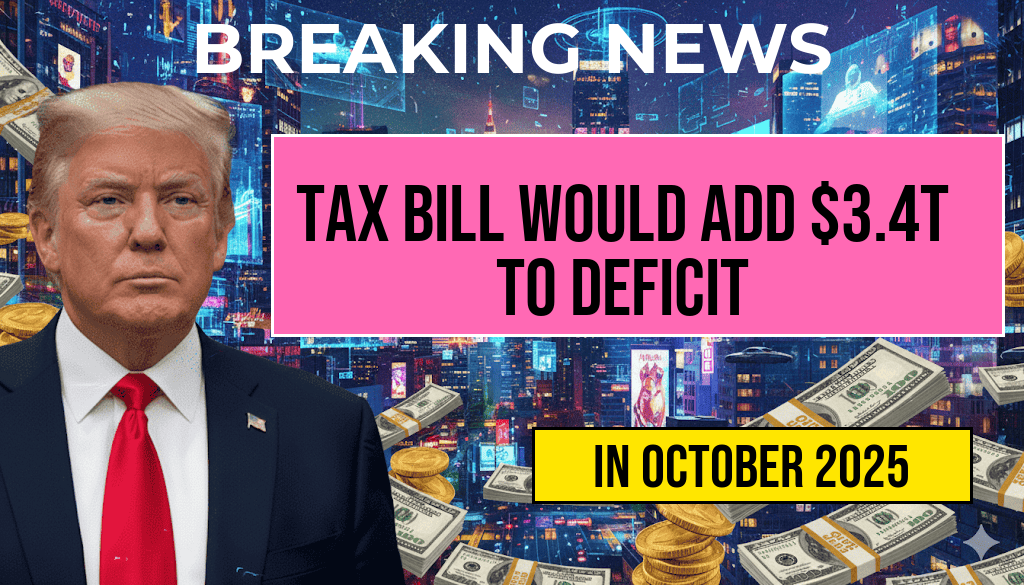The proposed legislation dubbed the “One Big Beautiful Bill” has ignited a wave of concern among fiscal analysts and taxpayers alike, as preliminary estimates suggest it could add approximately $3.4 trillion to the national deficit over the next decade. Critics argue that despite its promotional title, the bill’s financial implications threaten to substantially undermine the country’s fiscal stability. Supporters, meanwhile, emphasize its potential to fund vital infrastructure and social programs. However, independent analyses warn that the bill’s projected costs far outweigh its benefits, raising questions about the long-term fiscal discipline of policymakers.
Understanding the Scope of the ‘One Big Beautiful Bill’
Introduced as a comprehensive legislative package, the “One Big Beautiful Bill” encompasses a broad array of initiatives aimed at boosting economic growth through increased government spending. Key components include major investments in infrastructure, expanded social safety nets, and tax incentives for businesses. While proponents tout these measures as essential for modernizing the economy and reducing inequality, critics highlight the bill’s hefty price tag and potential to exacerbate the federal deficit.
Breakdown of Major Spending Areas
| Spending Category | Estimated Cost (in billions) |
|---|---|
| Infrastructure Development | $1,200 |
| Social Welfare Programs | $900 |
| Tax Incentives & Credits | $700 |
| Research & Development | $300 |
| Administrative Costs | $100 |
Total projected expenditure: $3.2 trillion, with a significant portion allocated toward infrastructure and social programs. However, these costs are expected to be offset by revenue gains from economic growth, though critics contend such projections are overly optimistic.
Projected Impact on the Federal Deficit
Analysis from non-partisan budget offices indicates that the bill’s enactment could increase the federal deficit by roughly $3.4 trillion over ten years. This figure accounts for the bill’s direct costs and the diminished revenue resulting from tax incentives and credits. The deficit increase is particularly alarming given current debt levels, which already surpass $31 trillion, according to the U.S. Treasury.
Sources of Revenue Shortfall
- Tax Incentives: The bill includes substantial tax breaks for corporations and high-income individuals, projected to reduce federal revenue by approximately $1.2 trillion over a decade.
- Delayed Tax Revenue: Certain provisions aim to defer tax collections, further shrinking the immediate revenue base.
- Economic Assumptions: The bill’s proponents forecast accelerated economic growth to offset costs, but independent analysts remain skeptical of these assumptions.
Political and Economic Reactions
Lawmakers’ Perspectives
Supporters argue that the bill is a necessary investment in America’s future, citing job creation and long-term economic gains. “This legislation represents a bold step toward rebuilding our nation’s infrastructure and ensuring equitable growth,” stated a prominent Democratic senator.
Conversely, opponents warn that the bill’s fiscal costs could lead to higher interest rates, increased borrowing, and potential inflation. “We are risking our economic stability for short-term gains,” warned a Republican representative. “The bill’s deficit projections are unsustainable.”
Market and Credit Rating Implications
Credit rating agencies have expressed concern that such a significant rise in the deficit could impact the U.S.’s sovereign credit rating, potentially raising borrowing costs across the economy. Financial markets are closely monitoring legislative developments, with some analysts warning of increased volatility if concerns about fiscal discipline persist.
Expert Analysis and Future Outlook
Fiscal experts emphasize that the bill’s long-term impact hinges on whether projected economic growth can materialize as forecasted. “If the growth assumptions hold true, the increased deficit could be manageable,” noted an economist at a leading think tank. “But if growth underperforms, we could face a debt spiral that hampers economic stability for years.” The Congressional Budget Office (CBO) continues to evaluate the bill’s implications, underscoring the importance of cautious fiscal planning.
Key Takeaways
- The “One Big Beautiful Bill” could add approximately $3.4 trillion to the deficit over ten years.
- Its primary costs stem from infrastructure, social programs, and tax incentives.
- Critics warn that the bill’s revenue assumptions are overly optimistic, risking future fiscal instability.
- Market and credit rating agencies remain vigilant, citing potential implications for borrowing costs.
As the legislation moves through legislative processes, stakeholders from across the political spectrum will scrutinize its economic forecasts and fiscal prudence. With a projected deficit increase of this magnitude, the debate over balancing economic growth with responsible budgeting is likely to intensify, shaping fiscal policy for years to come.
For more detailed information on U.S. federal debt and fiscal policy, visit the Wikipedia page on U.S. federal debt.
Frequently Asked Questions
What is the main concern regarding the “One Big Beautiful Bill”?
The primary concern is that the bill is projected to increase the national deficit by an estimated three trillion four hundred billion dollars, raising questions about its long-term fiscal impact.
How does the bill impact the country’s fiscal health?
The bill is expected to significantly inflate the deficit, potentially leading to increased debt levels and impacting the country’s economic stability over time.
Who is most affected by the proposed changes in the bill?
The bill’s tax policies could impact taxpayers across various income levels, but particularly high-income earners and businesses due to changes in tax rates and deductions.
What are the key provisions of the “One Big Beautiful Bill”?
The bill includes significant tax reforms aimed at reducing taxes for some groups while increasing tax burdens on others, which may contribute to the projected deficit increase.
What are the potential long-term implications of this bill?
If enacted, the bill could lead to a substantial rise in the national debt, potentially affecting public services, interest rates, and overall economic growth.

Leave a Reply